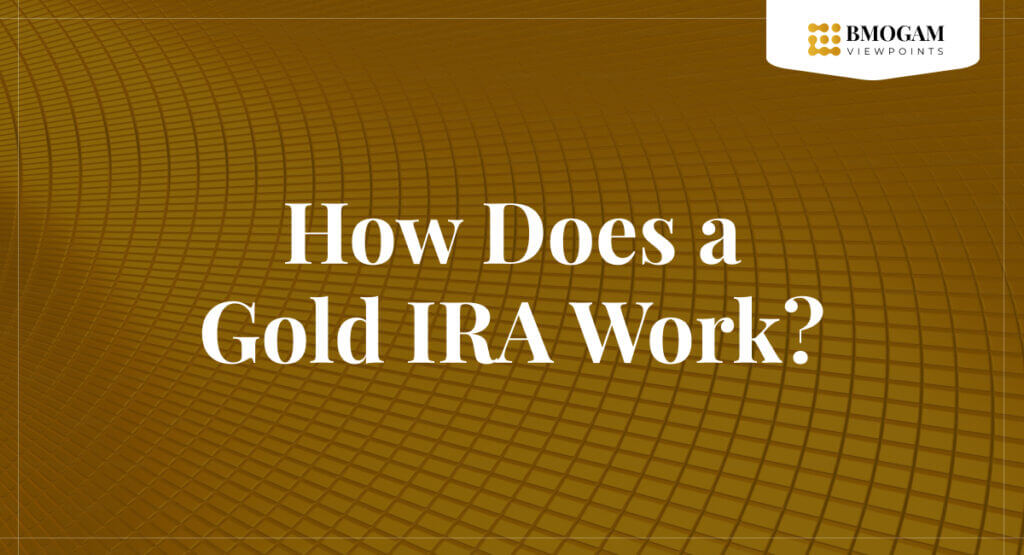Disclaimer: We are reader supported. We may be compensated from the links in this post, if you use products or services based on our expert recommendations. Please read our Advertising Disclosure.
Are you interested in learning more about gold IRA investments? If so, you've come to the right place. This guide provides you with everything you need to know about gold IRA investments and how to get started.
The article also dispels some of the myths that are commonly associated with them. So, whether you're a first-time investor or want to learn more about gold IRAs, keep reading for helpful tips and insights.
Before we get started:
We understand how difficult it is to pick a company that you can trust with your hard earned savings. That's why we create informative and useful information to give you as much knowledge as possible to make the right decision.

We created a list of our highest recommended investment companies, to make comparing and choosing the company best suited to your needs as easy as possible.
Or...
Get a FREE Gold Investing Packet from our #1 recommendation, by clicking the button below:
Protect Your Wealth & Tax and Penalty Free!
What Is a Gold IRA and Why Invest in It?
A gold IRA is an individual retirement account that allows you to hold physical gold as an investment. You can purchase and hold gold coins, bars, and other forms of gold in your account.
The purpose of a gold IRA is to provide you with a way to diversify your portfolio and protect your retirement savings from inflation.
There are several benefits to investing in a gold IRA:
For starters, gold is a very stable investment. It has been used as a currency and store of value for centuries. Unlike stocks and other investments that can be subject to volatile markets, gold tends to maintain its value over time.
This makes it an ideal investment for those looking to protect their nest egg.
Another benefit of investing in a gold IRA is tax-deferred growth. This means that you will not have to pay taxes on the gains from your investment until you withdraw the money at retirement.
This can help you maximize the growth of your nest egg and minimize your tax liability.
Gold IRAs offer flexibility that other retirement accounts do not. For example, you can take distributions in gold coins or bars rather than cash.
This allows you to diversify your portfolio even further and gives you more control over how you access your retirement savings.
Investing in a gold IRA also provides you with safety from market volatility. Because gold is not subject to the same fluctuations as other investments, it can act as a buffer against losses in your portfolio.
This stability can help you weather the ups and downs of the stock market and protect your retirement savings.
Gold IRAs are also a great option for long-term investment. Because gold has historically increased in value over time, it can be a wise choice for those looking to invest for the long haul.
This makes it an ideal investment for those nearing retirement or already retired.
When you invest in a gold IRA, you get the best of both worlds: the authority and backing of the government with the freedom and flexibility of a self-directed account. This gives you more control over your retirement savings and how you access them.
Last but not least, gold offers outstanding profit potential. In addition to its stability, gold can generate significant returns. This makes it an attractive investment for those looking to grow their wealth.
Myths About Gold IRAs
Let's dispel some of the common myths about these types of accounts.
One common misconception about gold IRAs is that you must invest in gold coins. This is not true. While you can invest in gold coins if you'd like, other options are also available.
You can also invest in gold bars, rounds, and other forms of gold. The choice is up to you.
This couldn't be further from the truth. Gold is a very stable investment. It has been used as a currency and store of value for centuries.
Unlike stocks and other investments that can be subject to volatile markets, gold tends to maintain its value over time. This makes it an ideal investment for those looking to protect their nest egg.
With a gold IRA, you will not have to pay taxes on the gains from your investment until you withdraw the money at retirement. This can help you maximize the growth of your nest egg and minimize your tax liability.
What Documentation Is Needed to Open a Gold IRA?
Just like any other retirement account, to open a gold IRA, you'll need to provide some documentation. This includes:
How to Setup a Gold IRA
If you're interested in using a gold IRA to diversify your portfolio, there are a few things you need to do to get started.
Choose a Reputable Gold Dealer
The first step is choosing a reputable precious metals dealer that specializes in gold IRAs. This is important because they will be responsible for holding and safeguarding your gold. Research and select a custodian with experience and a good reputation.
Select the Type of Account You Want
There are three main types of gold IRAs:
In a traditional gold IRA, you make pre-tax contributions and the account grows tax-deferred. Withdrawals in retirement are subject to taxation.
In a Roth IRA, you make post-tax contributions. The account grows tax-free and withdrawals in retirement are also tax-free.
Contributions to a SEP gold IRA are limited to 25% of your income or the standard IRA contribution limit, whichever is less. Self-employed individuals or small business owners generally use this type of account.
Fund Your Account
Once you've selected the type of account you want, you'll need to fund it. This can be done in three ways:
Contributions in Cash
You can make contributions to your account with cash. This can be done through a rollover from another retirement account or by making annual contributions.
Rollover
It is possible to roll over assets from an eligible retirement plan, such as a 401k. This allows you to keep your money invested in a tax-deferred account and avoid paying a tax penalty on the rollover.
Transfer from Another IRA
You can also transfer assets from another IRA into your gold IRA. This can be done without incurring any taxes or penalties.
Buy Gold
The next step is to purchase gold to hold in your account. This can be done through various methods such as buying gold from a dealer or purchasing gold stocks and mutual funds.
Again, your custodian can help you with this process based on availability.
It is worth noting that not all gold metals are eligible for inclusion in a gold IRA. The Internal Revenue Service has specific requirements for the type and purity of gold that can be held in an IRA.
These requirements are:
Review Your Account Periodically
Once you've established your gold IRA, it's important to review it periodically to ensure everything is on track. This includes monitoring your gold holdings' value and ensuring your account is properly funded.
Doing so can help ensure that your gold IRA is a valuable part of your retirement planning.
Like any investment, some risks are associated with investing in a Gold IRA. These include market risk, storage risk, and liquidity risk.
Are There Any Risks Associated with Owning a Gold IRA?
Market Risk
Gold prices constantly fluctuate, which means there's always the potential for loss when investing in this metal. However, gold has historically been a stable investment, outperforming the stock market in many instances.
Storage Risk
Another risk to consider is storage risk. When you invest in a Gold IRA, your custodian is responsible for storing the gold safely and securely. This can be costly and may require special insurance.
Scam Risk
There is always the risk of scams when investing in anything. Many companies claim to offer gold IRAs but don't deliver on their promises. It's important to do your research and only work with reputable approved custodians to avoid being taken advantage of.
Liquidity Risk
Lastly, there is liquidity risk to consider. Gold is not as easy to sell as other investments, such as stocks or mutual funds. You may have to wait longer to find a buyer willing to pay the price you want for your gold.
This could delay your ability to access your retirement savings when needed.
Tips for Choosing Your Ideal Gold Dealer
There are a lot of choices when it comes to gold dealers. Here are some tips to help you choose the right one:
How Much Money Do You Need to Start a Gold IRA?
On average, you can open a gold IRA account with as little as $10,000 - $25,000 to make it worth doing. However, your contribution limit for the year is $6,000 if you're under 50 and $7,000 if you're over 50 years.
So if you want to fund your account for the year fully, you'll need to have that much money available. But you can make partial contributions based on your financial capability per year.
Additionally, most gold IRA custodians will require you to keep a minimum balance in your account, typically around $5,000-$25000. Note that there is no limit on how much gold you can hold in an IRA account as long as you stick within the annual limit contributions.
Can You Have More Than One IRA?
Yes, you can have more than one gold IRA. Many people choose to have several IRAs to diversify their retirement savings. Moreover, other precious metals such as silver, palladium, and silver are also allowed in an IRA.
So if you're interested in diversifying your portfolio further, you can also consider investing in other metals.
Can You Store Your Gold IRA at Home?
No, you cannot store your gold IRA at home. The precious metals in your account must be stored with a custodian that specializes in precious metals. This is because the IRS has strict guidelines on how these assets must be stored and guarded.
Furthermore, most custodians will insure your gold to protect you against loss or theft.
Moreover, there are two main ways to store precious metals:
Commingled Storage
This is where your metals are stored with other people's metals. Commingled is the most common way to store precious metals and is usually the most economical since you all share storage fees.
Segregated Storage
This method stores your metals separately from other people's metals. This costs more but gives you more peace of mind knowing that your assets are not commingled with anyone else's.
Is There a Penalty for Withdrawing From a Gold IRA?
You can withdraw from your IRA at any time. However, if you make a withdrawal from your IRA before you reach the age of 59 1/2, you may be subject to a 10% early withdrawal penalty.
Additionally, the IRS may also tax the withdrawals as ordinary income. Therefore, it's important to consult with a financial advisor to see if withdrawing from your account is the best move for your situation.
What Happens to Your Gold IRA When You Die?
When you die, your physical metals IRA will go to your designated beneficiary. The account will be distributed as part of your estate if you don't have a beneficiary.
Therefore, it's important to ensure that your beneficiary designation is up to date to avoid complications.
Summary
A gold IRA is a great way to diversify your retirement savings and protect your assets from inflation. However, choosing the right custodian and understanding the rules and regulations before investing is important.
Additionally, remember that you'll need to have enough money to cover the cost of storage and insurance. If you're careful and do your research, a gold IRA can be a valuable addition to your portfolio.
You can get a Free Gold Investors Guide from our top gold and precious metals company recommendation by clicking the link above or you can read our article of the top companies we reviewed this year:
>> CLICK HERE to read our list of the Top Gold IRA Companies. <<

I started BMOGAM Viewpoints as a way to compile all my views on investing in one place. I own my home, have some real estate, and own a few stocks like most people, but what really drives my interest in investing is I have a strong love of precious metals, especially gold.



